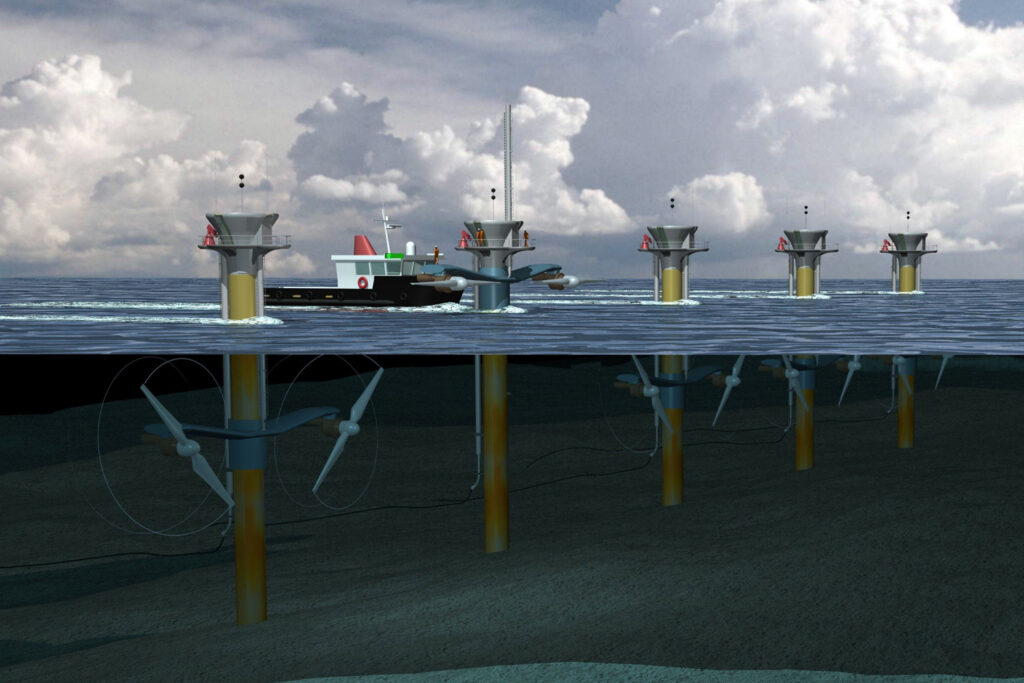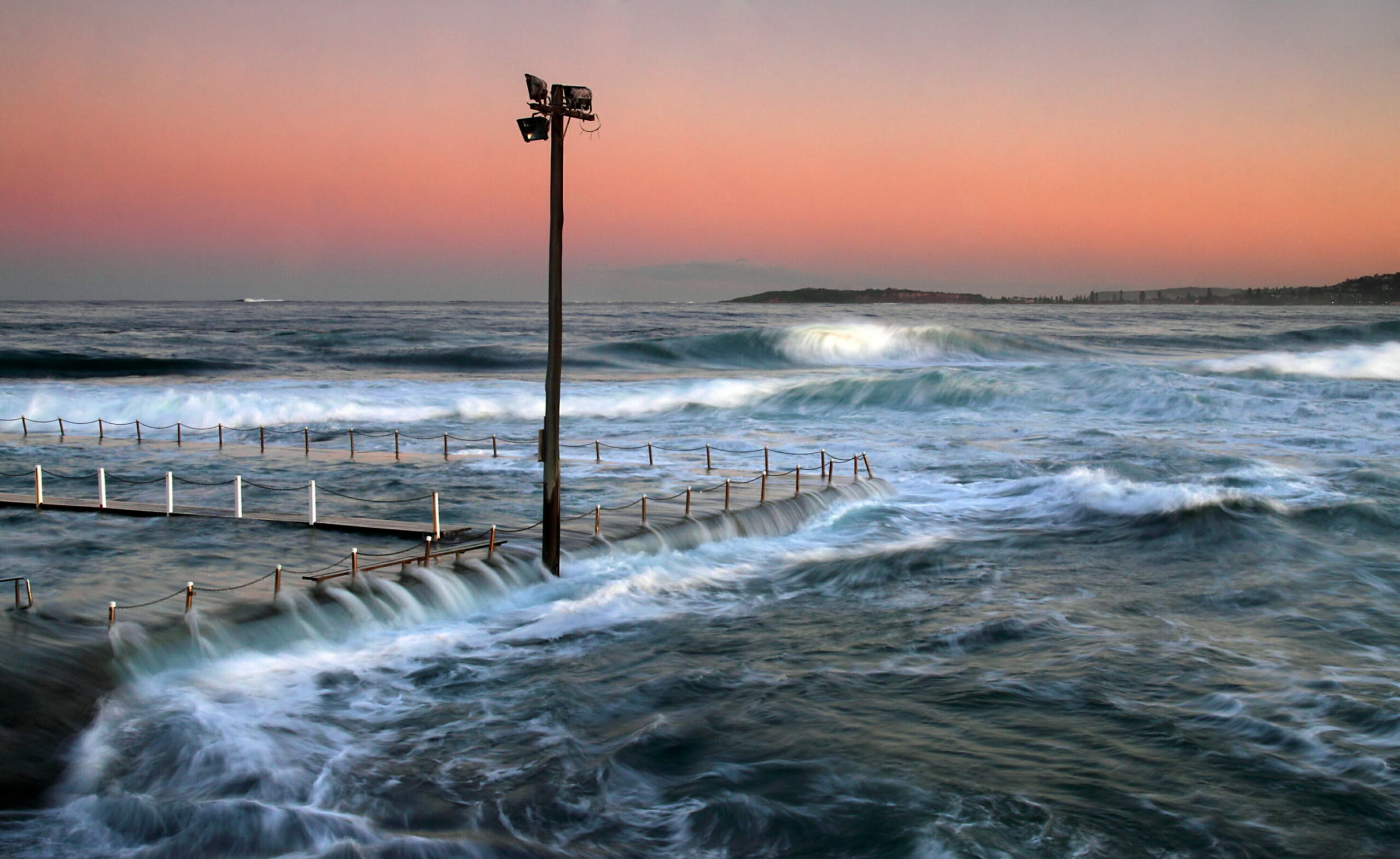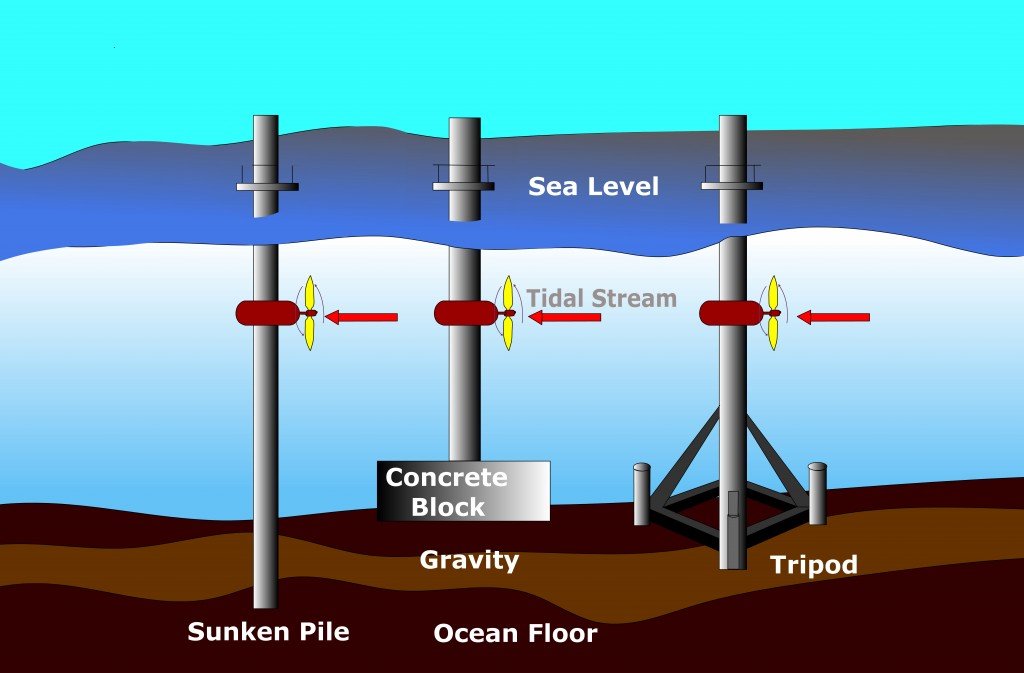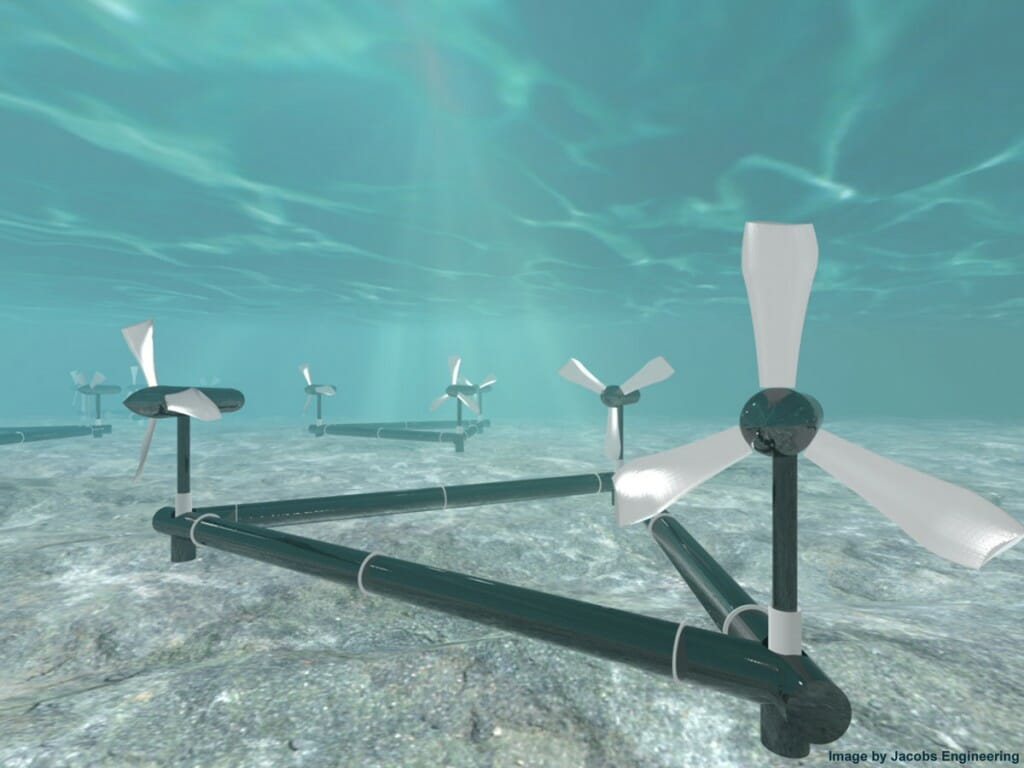Welcome to Linquip Blog. Today and in this article, we are going to have a look at Tidal energy Diagrams.The Story of Tidal Power Based on Diagrams. But why diagrams? How will diagrams help us? The answer is very simple. In other articles, we have discussed what tidal energy is, what its functions are, how it works, and what its advantages and disadvantages for the environment are. This article is just an overview of all of the information we provided before, but with the difference that we will explain to you more clearly and comprehensively how tidal energy works by showing various diagrams, which will help you to better understand each system of harnessing tidal power.
In this article, we are going to take a closer look at this energy, which is one of the renewable energies, and see what its mechanism is. In the following, we have a basic but comprehensive definition of Tidal Energy for those who are not familiar with tidal power, and then we will move to the three common and available systems of harnessing tidal power.
Our team gathered all of the necessary information on this topic to eliminate the need for reading diverse content on other websites. Stay with us until the end to find the answer to your question on this topic. We have a long journey ahead of us, so take a deep breath, sit back, and keep reading this article until the end.
What Is Tidal Energy?
The energy for Earth’s tides comes mostly from the Moon’s gravity and a little from the Sun’s gravity. The part of the ocean facing the Moon bulges out. The part of the ocean on exactly the opposite side of Earth bulges out too. So as Earth turns, the ocean surface seems to rise and fall. Usually, there are two high tides and two low tides each day.
With all that water moving up and down, we ought to be able to capture some of that tidal energy. And we can! We can use tidal energy to supply electricity to our homes and businesses. We can use tidal energy in some places instead of burning coal and oil which contribute to global warming.
Historically, tide mills have been used both in Europe and on the Atlantic coast of North America. The incoming water was contained in large storage ponds, and as the tide goes out, it turns waterwheels that use mechanical power to produce mill grain. The earliest occurrences date from the Middle Ages, or even from Roman times. The process of using falling water and spinning turbines to create electricity was introduced in the U.S. and Europe in the 19th century.
However, all it takes is a steam generator, tidal turbine, or the more innovative dynamic tidal power technology to turn the kinetic energy of tides into electricity. Engineers recently designed the world’s largest single-rotor tidal turbine, which can generate more electricity at a lower cost of operation and maintenance. Anyway, tidal currently isn’t the cheapest form of renewable energy, and the real effects of tidal power on the environment have not yet been fully determined.
In the following, you will become more familiar with the rules and principles of this energy and you will read more about its secrets. All of the ways that let us use the power of tides in oceans will be depicted through tidal energy diagrams.
Tidal Energy Working Principle Explanation with the Help of Diagrams?
To use this energy, we should harness tidal energy with the help of some systems. The most important components in all of the three available systems are turbines. The turbine is an integral part of these systems receiving energy from the movements of tides. The kinetic energy of the tides in different substrates will move the blades of turbines and the turbines will convert the kinetic energy of the blades into electrical energy. The blades rotate multiple times (around 12 to 18 times per minute). This rotation depends on the strength of the tide. The gearbox that’s connected to the system works as a converter, creating electricity from the tidal energy. This energy then is used for different purposes.
As we mentioned above, Experts have come up with three main ways of harnessing tidal power. These ways are tidal barrages, tidal lagoons, and tidal turbines. In the following, we will elaborate on each of these systems with their diagrams to make it clear for you to understand what is exactly going on in these harnessing systems of tidal power.
1. Tidal Energy Diagram: Barrages
A Tidal Barrage is a Dam built across an Estuary or Bay to generate Electricity from the Flow of Tides. It works using the same principles that are used in the production of mainstream hydro-powered electricity. Instead of damming water on one side like a conventional dam, a tidal barrage allows water to flow into a bay or river during high tide and releases the water during low tide. This is done by measuring the tidal flow and controlling the sluice gates at key times of the tidal cycle. Turbines are placed at these sluices to capture the energy as the water flows in and out.
Actually, in this form of Tidal Power, a Barrage is built near the coast where water is collected during periods of high tides. During low tide, the barrage allows the water from the reservoir to move toward the ocean or sea. The potential energy of the water at a higher level is converted to electricity using Turbines.
2. Tidal Energy Diagram: Lagoons
Tidal lagoons work in a similar way to tidal barrages by capturing a large volume of water behind a man-made structure which is then released to drive turbines and generate electricity. Unlike a barrage, where the structure spans an entire river estuary in a straight line, a tidal lagoon encloses an area of coastline with a high tidal range behind a breakwater, with a footprint carefully designed for the local environment.
As the tide comes in, the water is held back by the turbine wicket gates, which are used to control flow through the turbine and can be completely closed to stop water from entering the lagoon. This creates a difference in water level height (head) between the inside of the lagoon and the sea. Once the difference between water levels is optimized, the wicket gates are opened and water rushes into the lagoon through the bulb turbines mounted inside concrete turbine housings in a section of the breakwater wall. As the water turns the turbines, electricity is generated.
3. Tidal Energy Diagram: Turbines
These turbines are like the systems we use to harness the power of the wind. Tidal turbines have shorter blades compared to wind turbines; these blades are also stronger than them. How does tidal energy work in this turbine type? Well, a tidal turbine is underwater; tides move the turbine, resulting in the activation of a generator. This generator is responsible for producing electricity.
Tidal turbines are great for places with big and strong tides. These turbines are still new to the industry but they can be used for great achievements. Just like tidal barrages, these systems also have a high upfront cost. But they are cheaper than the previous item. The installation and maintenance of tidal turbines are high, but they have a less environmental impact which is considered a plus point for this type of harnessing tidal energy.
Conclusion
The present article was an attempt to deliver all the essential information about Tidal energy Diagrams And was a picture to show how diagrams can help us to better understand the working principle of complex concepts such as tidal energy. In this article, firstly we brought the basic definition of what this kind of renewable energy is, and then we moved to the three major and current ways to get energy from tidal movements and brought some diagrams to show you how these three systems work.
If you wish to share ideas about tidal energy and the working principle, we will be very glad to have your point of view in the comments on our website Linquip. Moreover, if you have any questions about this topic, you can sign up on our website and wait for our experts to answer your questions. Hope you enjoyed reading this article.
Buy Equipment or Ask for a Service
By using Linquip RFQ Service, you can expect to receive quotations from various suppliers across multiple industries and regions.
Click Here to Request a Quotation From Suppliers and Service Providers
Read More On Linquip






